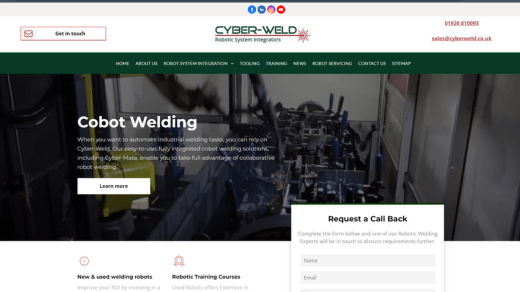The landscape of manufacturing has undergone a significant transformation with the advent of collaborative robots, often referred to as “cobots.” These advanced robotic systems are designed to work alongside human operators seamlessly, offering a new paradigm in efficiency, safety, and precision. In the field of welding, collaborative robot welding has emerged as a game-changer, revolutionizing traditional manufacturing processes. This article explores the key aspects and advantages of cobot welding, highlighting its impact on the manufacturing industry.
Understanding Collaborative Robot Welding:
Collaborative robot welding involves the integration of robotic systems with welding technology to perform tasks traditionally carried out by human welders. Unlike traditional industrial robots, cobots are specifically designed for collaboration, featuring advanced sensors and programming that enable them to work safely in proximity to human workers without the need for safety barriers.
Key Advantages of Cobot Welding:
- Enhanced Safety:
Safety is a paramount concern in manufacturing, and cobot welding addresses this by reducing the risk of accidents. Collaborative robots are equipped with sensors that detect the presence of humans and adjust their speed or temporarily halt operations when workers enter their vicinity. This feature minimizes the potential for collisions and ensures a safe working environment. - Improved Ergonomics:
Cobots are designed to complement human capabilities, alleviating the physical strain associated with repetitive tasks. In welding applications, collaborative robots can handle the precision work, intricate movements, and prolonged welding processes, allowing human operators to focus on tasks that require critical thinking and decision-making. - Increased Productivity:
The synergy between human operators and cobots leads to enhanced overall productivity. Collaborative robot welding systems work tirelessly without the need for breaks, reducing downtime and increasing the overall output of the manufacturing process. This collaborative approach maximizes efficiency and ensures a continuous workflow. - Flexible Programming:
Cobot welding systems offer flexibility in programming, allowing manufacturers to adapt to changing production requirements easily. With user-friendly interfaces, operators can program cobots for different welding tasks, making them versatile assets on the manufacturing floor. Quick reprogramming enables rapid changes in production setups, improving adaptability. - Precision and Consistency:
Cobots excel in precision tasks, providing consistent and high-quality welding. The robotic arms are equipped with advanced sensors and vision systems that enable them to execute precise welds with minimal variations. This level of accuracy contributes to the overall quality and reliability of the manufactured products. - Cost-Efficiency:
While the initial investment in collaborative robot welding systems may seem significant, the long-term cost savings are substantial. Cobots operate efficiently, reducing the need for overtime, minimizing errors, and decreasing the likelihood of workplace injuries. This cost-effectiveness enhances the return on investment over time.
Case Studies and Industry Adoption:
Numerous industries have embraced collaborative robot welding due to its transformative impact on manufacturing processes. Automotive manufacturers, aerospace companies, and small to medium-sized enterprises (SMEs) across various sectors are integrating cobots into their welding operations. Case studies highlight how collaborative robot welding systems have not only improved efficiency but also elevated the overall safety and quality of welding processes.
Conclusion:
Collaborative robot welding represents a pivotal advancement in the realm of manufacturing, offering a harmonious blend of human expertise and robotic precision. The benefits of enhanced safety, improved ergonomics, increased productivity, and cost-efficiency underscore the value of cobot welding in diverse industries. As technology continues to evolve, collaborative robots will likely play an increasingly integral role in shaping the future of welding and manufacturing, ushering in an era of innovation and efficiency on the factory floor.
Check out Cyber Weld for more.

